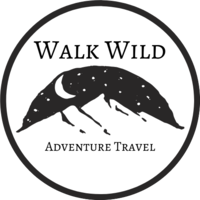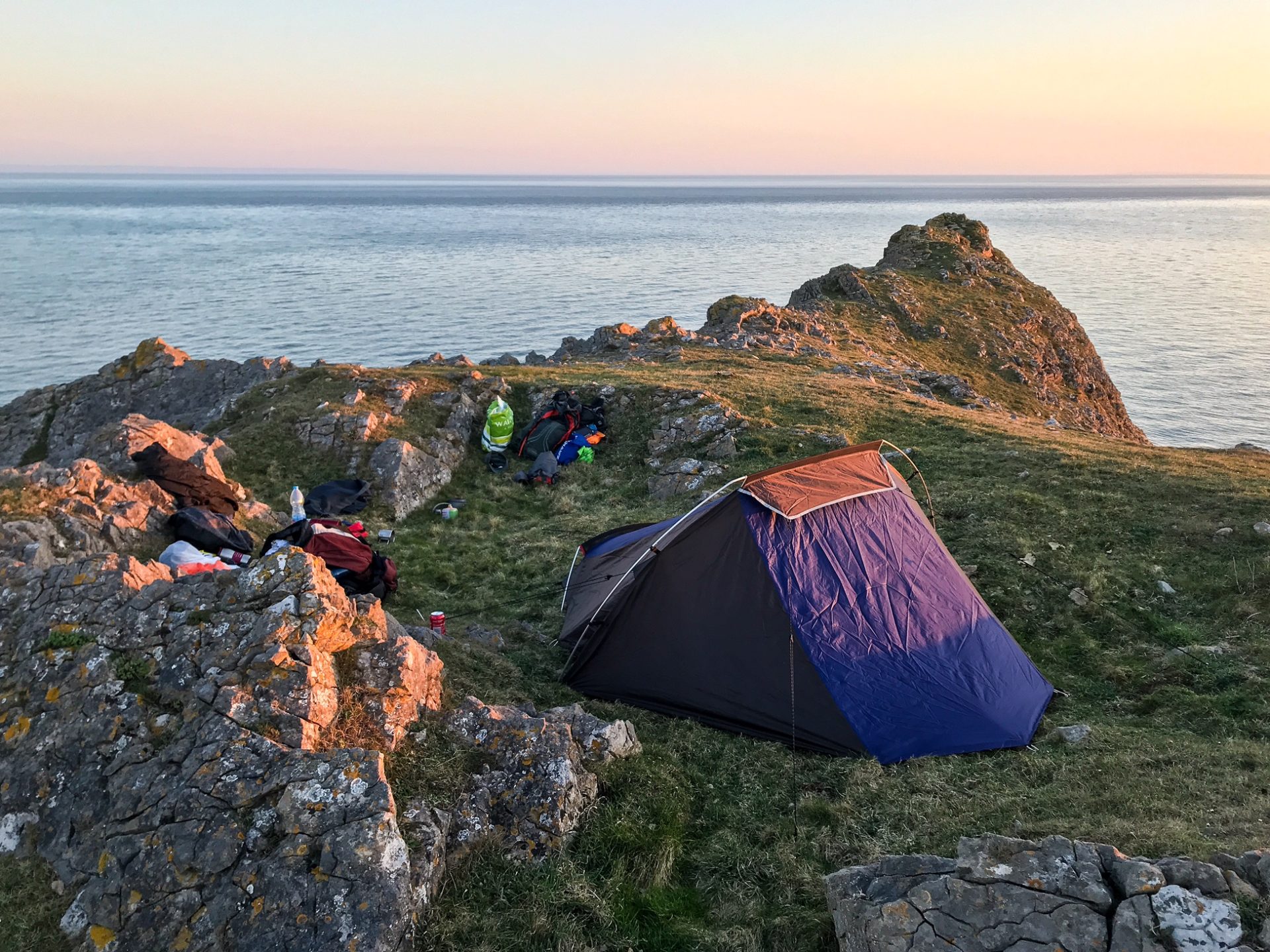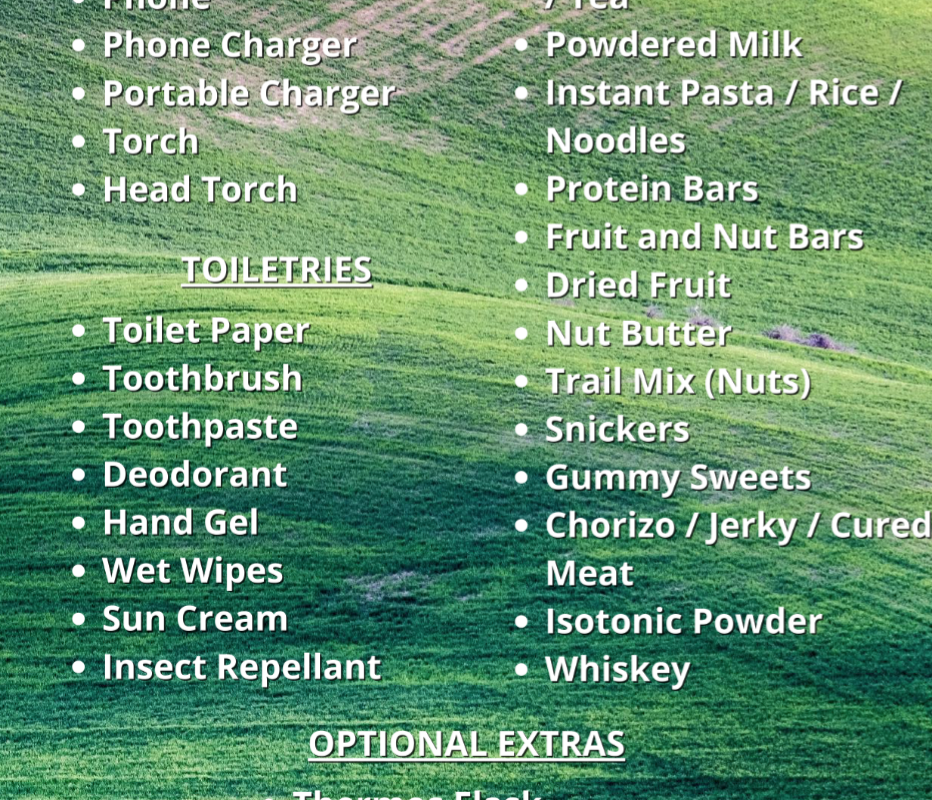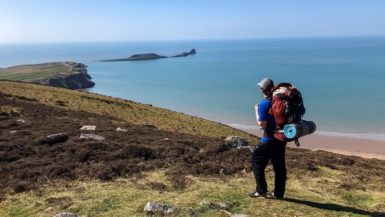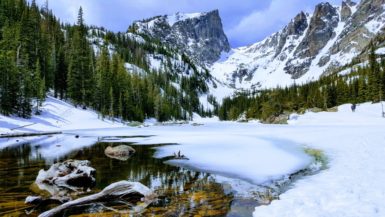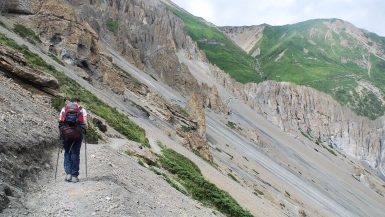Full Wild Camping Kit List – FREE DOWNLOAD
7 Minute Read
Wild camping is one of the best ways to see wild and remote places. It allows you to hike far into an area of nature and spend some time exploring the wilderness there. Organising a good wild camping kit list is crucial to ensure your trip success!
I am an avid wild camper and have been on many trips around the world. Some of my favourites include Pulpit Rock and Trolltunga in Norway. I also love wild camping in the UK and have spent plenty of time around the Peak District and Brecon Beacons.
Whenever I hike long-distance trails such as the Hadiran’s Wall Path (95 miles) and the Pembrokeshire Coast Path (186 miles), I am wild camping along the way.
I’ve tested plenty of kit and have had some shockers with carrying the wrong gear, overpacking my bag, and having kit malfunctions when out on the trail!
Before each hiking trip I now write up a detailed wild camping kit list to ensure I don’t forget anything.
I’ve created a FREE DOWNLOADABLE PDF below which you can use when packing your gear for your wild camping trip. I suggest you print off the list and cross off each item after you pack it to make sure you don’t forget anything!
I suggest you store this kit in a backpack no larger than 40-50 litres. A good tip is that your hiking backpack should never weigh more than 20% of your bodyweight. Aim to keep it as light as possible.
This kit list works well for a 2-night and 3-day wild camping trip. If you want to go for longer, you shouldn’t have to bring too many extra things, maybe just a few extra clothing items and some more food. Aim to restock and clean your clothes along the trail.
Read on to find out more about what I’ve included in this wild camping kit list and why.
- Camping Gear
- Hiking Clothes
- Electronics
- Toiletries
- Food & Drink
- Optional Extras
See also:
How to Go Wild Camping in the UK
Multi-Day Hike Kit List
Food for a Multi-Day Hiking Trip
This page contains affiliate links. This means I make a commission if you buy a product I have recommended (at no extra cost to you). All recommendations I give are genuine and my own. Thanks for the support!
1. Camping Gear
Let’s start with the backpack. As mentioned above, you don’t want to go too large on this. Although I understand that the size of your backpack is limited by the quality of your kit. I suggest you invest in gear piece by piece and gradually upgrade whenever you need more.
I use the Osprey Exos 48 litre backpack. I’m looking to get something slightly smaller but need to get a smaller sleeping bag first. Functionally, this bag is excellent and a reasonable price.
I then use a Coleman 2-man tent which weighs about 2.3kg. It’s easy to pitch with one person and discrete for wild campers.
A sleeping mat is essential to stay warm. You can use inflatable but they’re prone to popping and I’ve been through a few myself. Therma-rest is considered the best by most hikers but it’s pricy!
I use a Vango 3-season sleeping bag which is warm to about 0 but no lower (don’t listen to what it says on the package, they are never as warm as they say they are). My sleeping bag liner keeps me slightly warmer and it’s easy to wash!
An inflatable pillow doesn’t add much weight but it’s a lot of comfort! If you want to save cash, folding up some clothes under your head will do!
I use a gas camping stove. One that folds out with a screw on gas canister. I go for small and lightweight here. I’ve been considering a Jetboil for a while but they are expensive and a little heavy.
I carry one cooking pot, a mug, and a spork for all my meals. I wipe them down with wet-wipes following each meal and keep it nice and simple. I also always carry spare lighters in case one doesn’t work.
I like the soft water bottles that press nicely into the side of my backpack and don’t jut out. I can screw my water filter onto them whenever I need to drink from a lake or stream.
A Medical Kit is an essential. Most important are plasters and painkillers!
See also:
How to Stay Safe When Hiking
I bring a spare rain cover for my backpack and put all my kit inside coloured waterproof stuff sacks to make sure everything keeps dry and is easy to find.
Lastly is a microfibre towel for any washing and a bin bag to put all your trash in so you leave no trace!
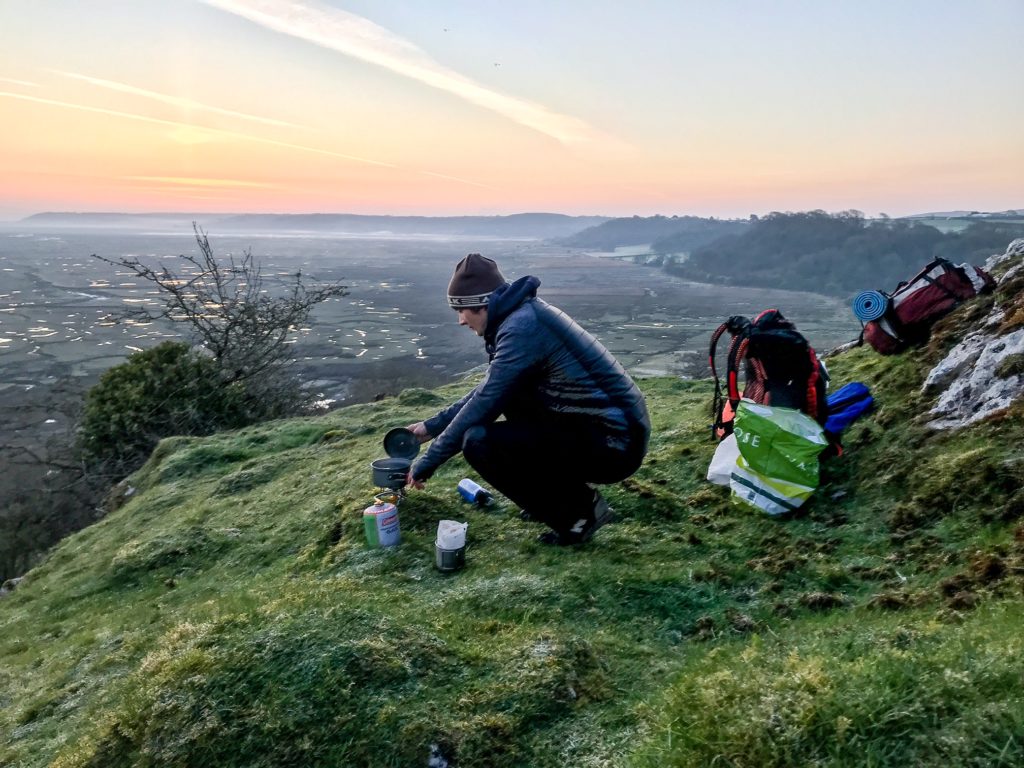

2. Hiking Clothes
Next up are the hiking clothes I use. I’ve long since stopped using hiking boots and now only use trail running shoes. They aren’t waterproof but they are so lightweight and comfortable it is worth the sacrifice.
I use Altra Lonepeaks which are very popular with thru hikers from the US.
I bring a pair of Injinj socks which are great for my feet and don’t give me any blisters. I then have a soft/dry pair of socks I sleep in. They will be merino wool if it’s cold weather and something lighter if it’s warmer.
I bring two pairs of regular underwear – nothing special here! I wear lightweight trekking trousers that zip off as I usually have them as shorts.
I bring two t-shirts, one is usually made of a sports material with air-wicking capabilities.
After this, the layering begins. I have a North Face zip-off fleece that has served me very well. On top of this you want to have a down jacket and then an outer waterproof layer / shell jacket.
I always bring a hat and gloves which are often worn in the tent at night. A snood/balaclava is especially useful if it’s bad weather.
Sunglasses and a cap are very useful for sunny weather and can be a big benefit in the exposed mountain air.
I sleep in some thermal base layers which can also be worn during the day if you are hiking in cold weather.
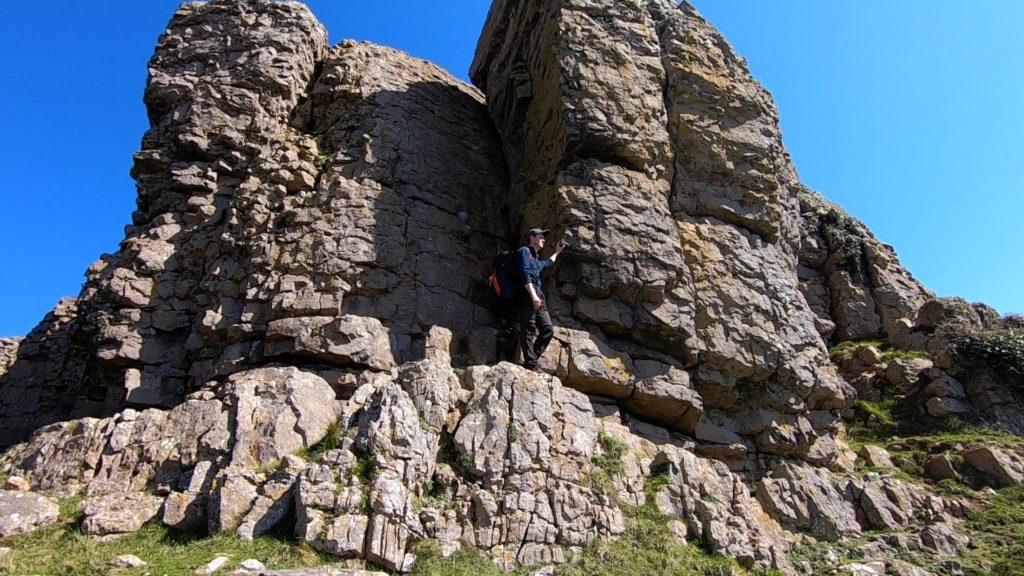

3. Electronics
As I’m recording all of my hikes for my YouTube channel, the electronics I bring with me are particularly important. Even if you are just hiking for pleasure you will need some of these items for pictures, navigation, and music/podcasts in the evenings.
A camera is a must. I use a GoPro for making my hiking videos but a DSLR can also capture some excellent pictures although it’s much heavier!
I also bring my phone so I can track my route on AllTrails and check my hiking times.
I then bring a portable charger to refill my camera and phone when out on the trail. I store these items along with all charging cables in my waterproof stuff sacks inside my backpack.
I bring a head torch for wearing in the tent and around camp when it’s dark so you can still use your hands. I also carry a spare hand-held torch as an emergency.
I bring my Kindle with me on every hike as I spend most of my evenings reading. A book or podcast can work just as well but I like the Kindle as it is lightweight, has a backlight, and a long charge.
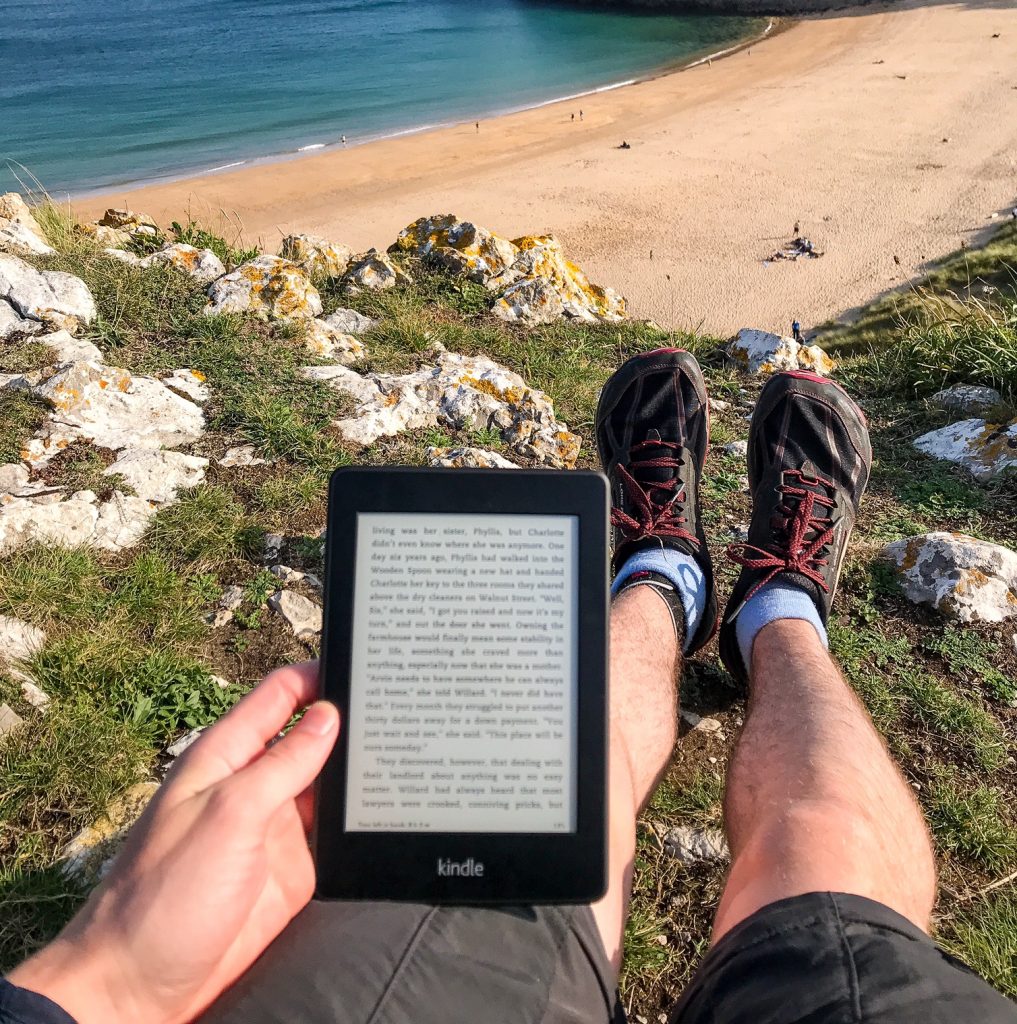

4. Toiletries
Don’t go crazy with these as they can add on alot of weight. No one is going to care if you smell a bit or aren’t wearing loads of makeup when you’re out hiking!
Try to buy some of the small travel-sized toiletries so they can fit nicely into your bag. Store them in a separate plastic bag incase anything leaks so it doesn’t make your whole backpack smell like a drugstore!
Toilet paper is essential for obvious reasons. It can also be used for drying and cleaning your cooking gear before you put it away.
Toothbrush and toothpaste are surprisingly important. Brushing your teeth can go a long way to making you feel human again after days of camping in the wild. Deodorant works in the same vein!
Hand gel and sanitary wipes can be used to clean your hands and even your cooking utensils. They are just good to have to keep you sanitary and remove some of the dirt and grime you’ve acquired throughout the day.
I actually often use the wet wipes to give myself a rudimentary shower! You would be surprised how much they help. Especially if you’re hiking in dusty climates or warm weather where you’ve been sweating and wearing greasy sun cream.
On that note, suncream is another essential. Even if you’re the type of person who tans easily, you should wear it. When you’re out hiking and wild camping it’s exposed and it’s easy to get burnt.
Trying to sleep in a stuffy tent with a burning hot face is not a pleasant experience. Trust me!
Insect repellant can be useful if you’re camping somewhere with lots of midges or mosquitos.
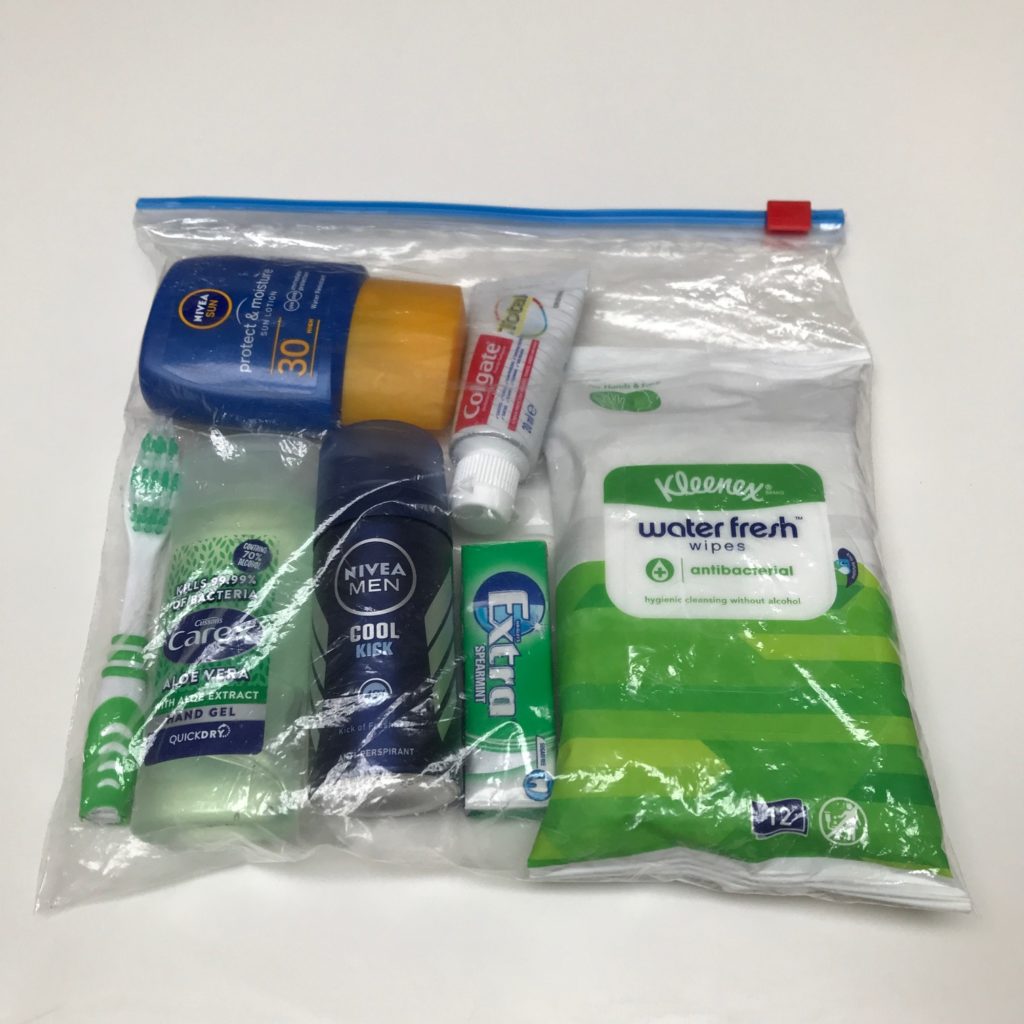

5. Food & Drink
I have written whole articles on this topic already as there is a lot to cover. You can see my advice on what food to eat on a multi-day hike here.
I’ll briefly explain some of the things I look out for when I’m buying my food for a wild camping trip.
Firstly, I like to go cheap. You can buy those dehydrated hiking meals but they are pricey and that cost will stack up! I just go to a regular supermarket to buy all my food.
For my hot meals and hot drinks, I search for things that can be made by simply adding water. Instant oats, dry pasta pouches, hot chocolate, coffee, etc. My tip is to bring some powdered milk to add to your drinks and pasta if you want it to be more creamy.
I then look for calorific, energy-dense snacks. Food that stores well and won’t perish.
Look for snacks containing oats, dried fruit, and lots of nuts. Food with slow release carbs, protein, and fats that can keep you going.
I like to take cured meat and jerky to add to tomato pasta or eat whilst I’m walking for a bit of protein.
Generally, I don’t bring too much chocolate as it melts but Snickers are always included as I love them and they pack a lot of energy!
As a treat, I bring a hip-flask of whiskey to enjoy when I’m tucked up in my sleeping bag at the end of the day. Warm you belly whilst watching the sunset or stargazing – what could be better.
6. Optional Extras
These are items I like to bring if I’m not super restricted by weight. Perhaps I’m going on a shorter hike or I’m going on a trip with a certain landscape that I need to navigate over.
You can include all of these items or add any extra luxuries of your own. It’s just important not to get carried away at this point and add too much weight!
A thermos flask is great for making tea in the morning which stays hot throughout the day. If you’re hiking in cold weather this is a god send. It saves you having to heat up water all the time and really helps you to stay warm.
I’ve got in the habit of putting a couple hand warmers at the bottom of my sleeping bag before I go to sleep if it’s zero or below outside. Acts like a little heater throughout the night!
Mostly I hike trails and follow the route signs. I also use the navigation on my AllTrails app to show me the trail. However, I know lots of people find a compass and map useful for navigation so don’t forget to bring those!
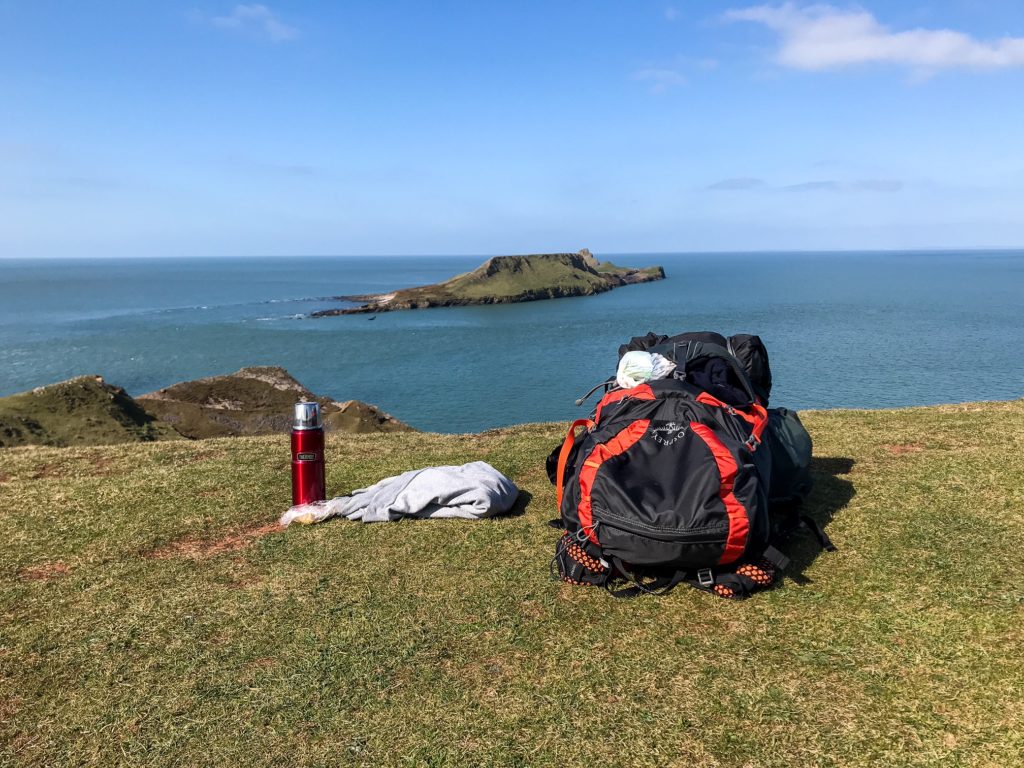

Before You Go
Thanks for reading about my wild camping kit list. If travel guides like this interest you, head over to my blog page to find out more!
If you’re new to Walk Wild, check out the About Me page to learn who I am and what made me want to be a travel writer.
Please comment below, let me know what you think and if there’s anything else you want information on!
Follow me on Twitter, Instagram, and YouTube to see out more.


